
Broward County Public Schools states that “parental/guardian participation is not required” for students to transition to another gender; advises students to transition over “summer break” to “maintain privacy”
Incidents
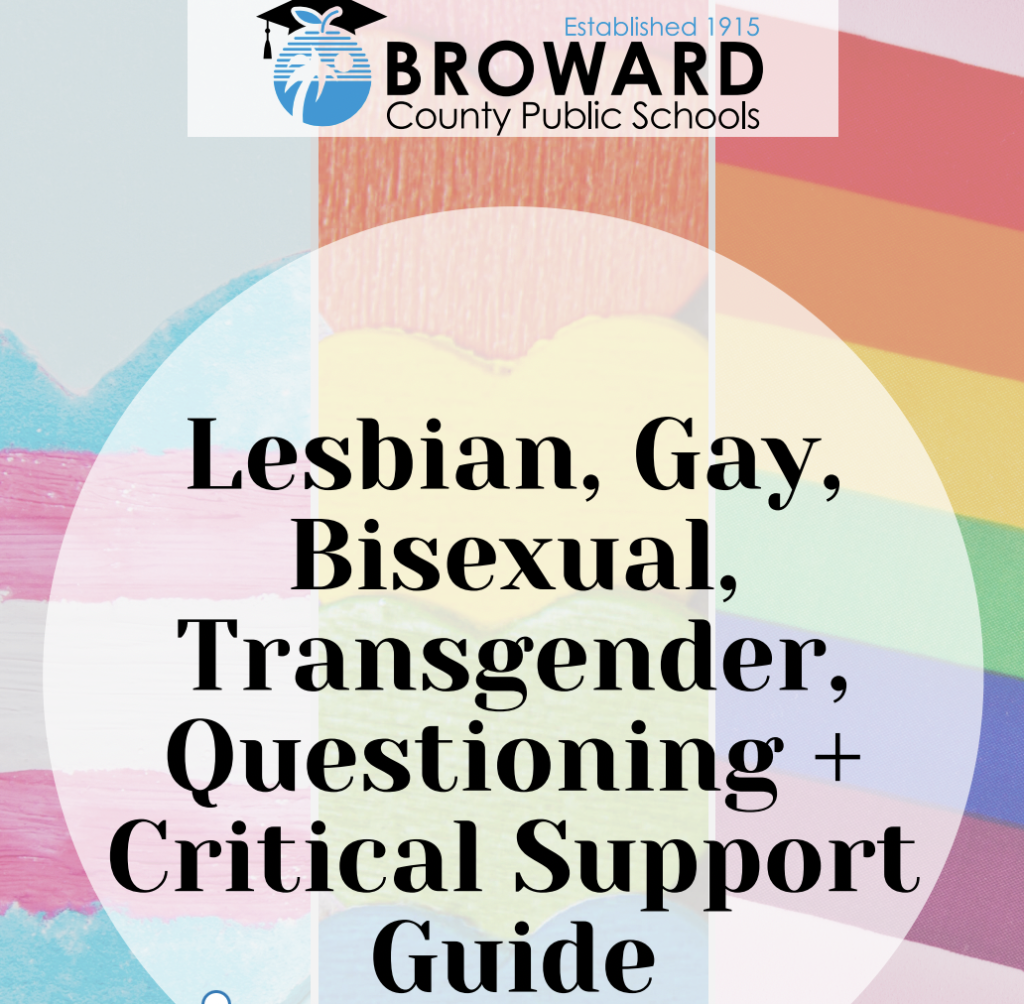
Broward County Public Schools has embraced the idea of promoting gender ideology to students. The school district’s website has a document titled “Transgender and Nonbinary Student Guidelines and Procedures.” The school district states in the document that “supporting transgender students and families of transgender youth gives young people in our schools the equal opportunity that all students need.” The school district continues to state: “The expression of transgender identity, or any other form of gender-expansive behavior, is a healthy, appropriate and typical aspect of human development.” The district also explains in the document that “for the sake of clarity, data and statistics in this document use ‘transgender’ as an umbrella term that may include nonbinary, gender expansive, and gender nonconforming youth.” The district continues to explain:
Children typically begin expressing their gender identity between the ages of two and four years old. Around this age, transgender children often express their cross-gender identification to their family members or caregivers. However, not all youth who identify as transgender begin the process at an early age; for some, gender identity is a slower, more nuanced process for a variety of personal, social, developmental and societal reasons. Creating a more welcoming environment for students’ gender diversity is a more effective and lasting strategy. Broward County Public Schools is working to develop more gender inclusive environments for all students, knowing that we are also creating more affirming spaces for transgender young people in the process.
This document was created by a “Transgender Guidelines Ad Hoc Committee.” The district used the “State of California Transgender Guidelines” and “GLSEN’s Model District Policy on Transgender and Gender Nonconforming Students” as guides to create the document. The district also explains that the first edition of the document was created in 2012.
The school district explains in the document that “the appropriate use of names and pronouns with transgender and nonbinary students is vital in creating a safe and supportive environment in the school community.” School staff and teachers are also mandated to use the preferred names and pronouns of students: “School personnel should use the student’s affirmed name and pronoun appropriate to a student’s gender identity, regardless of the student’s legal sex or legal name.” The document also explains that school staff can keep the gender transitioning process of students a secret from parents:
School personnel should privately ask a transgender student how they want to be addressed in communications to the home or at conferences with the student’s parent(s)/ guardian. In addition, prior to notification of any parent(s)/guardian regarding the transition process, school staff should work closely with the student to assess the degree to which, if any, the parent(s)/guardian will be involved in the process and must consider the health, well-being and safety of the transitioning student.
The document promotes a “Gender Support and Transition Planning Guide” and explains that this guide can be used to decide “when and how this is communicated to students and their parent(s)/guardian.” The document explains that some student records can also be updated to fit the preferred gender of students:
If the student requests, and in the case of an elementary-aged student, the student and parent(s)/guardian requests, the affirmed name shall be entered into the District’s Student Information System to inform staff of the name to use when addressing the student. This addition to the Student Information System is facilitated by the Assistant Principal, along with a trusted adult (see Gender Support and Transition Planning Guide) and communicated to the Data Entry Clerk/IMT at the student’s school. The A-03 panel in TERMS will have a field entitled “Affirmed First,” denoting the student’s affirmed first name.
The school district reiterates in the document that parents do not need to know about the transitioning process of their children in schools. The district explains: “Transgender students have the right to discuss and express their gender identity and expression openly and to decide when, with whom and how much to share private information, including with parent(s)/guardian.” The district then explains that “school leadership and/or staff shall not ‘out’ a child even to their own parent(s)/guardian.” The district further explains:
If a student transitioning at school is not ready to share their transgender status with their family, this should be respected. School staff should make a change socially, meaning calling the student by the affirmed name and pronoun.
The school district then emphasizes in the document: “It is strongly suggested that school personnel privately ask transgender and gender nonconforming students how they want to be addressed in communications to the home or at conferences with the student’s parents/legal guardians.“
The school district further explains that “transgender students shall have access to the restroom that corresponds to their gender identity asserted at school, or the restroom that makes them feel safe and comfortable.” This also applies to locker rooms and changing facilities. The school district also mentions overnight field trips: “If students are to be separated based on gender, the transgender student should be allowed to room with peers that match their gender identity.” When discussing field trips, the school district once again emphasizes keeping the gender identity a secret from parents: “Schools have an obligation to maintain the student’s privacy and shall not disclose the student’s transgender status to other students or parents if the student is not already out and/or did not give permission.“
The school district also advises teachers to not call students “boys and girls” but rather “students” and “scholars.” The school district explains that “simple things such as calling students ‘students’ or ‘scholars’ instead of ‘boys and girls’ may seem insignificant but actually make a notable difference to students who feel alienated because they may not identify as being part of either of the two binaries.”
The school district further explains that students can participate in sports that correlate with their preferred gender. The district states in the document: “Transgender students shall be permitted to participate in gender-segregated recreational physical education activities, athletic teams and competition in accordance with the student’s gender identity as expressed by the student and asserted at school.”
The school district has a section in the document labeled “Student Transitions.” The district states that “parental/guardian participation is not required” for the gender transitioning process of students. The district explains:
In most cases, transitioning is a very private matter. Students may choose to have their parent(s)/guardian participate in this process; however, parental/guardian participation is not required. Sometimes older students (high school or middle school) are navigating familial challenges with acceptance of a child’s gender affirmation.
The school district further advises that students transition to another gender over “summer break” to “maintain privacy.” The district states: “In order to maintain privacy and confidentiality regarding transition and gender identity, transgender students may wish—but are not required—to transition over a summer break or between grades.” The district states that in pre-kindergarten through fifth grade, the parents should be involved in the transitioning process for their children. However, for students in the sixth grade through the twelfth grade, “notifying parent(s)/guardians who are unaware or not on board carries risks for the student.”
The district additionally states that staff and students will receive training about “transgender and nonbinary students.” The district states: “In order to further facilitate a safe and supportive school environment for all students, the BCPS Equity & Diversity Department will incorporate education and training about transgender and nonbinary students into their anti-bullying curriculum, student leadership trainings and staff professional development.”
The district further states that “professional development for school staff could include topics on gender identity and gender expansiveness.” Training could also “include experiences of transgender and other gender nonconforming students, risk and resilience data regarding transgender and gender nonconforming students, ways to support transgender students and to improve the school climate for gender nonconforming students and gender-neutral language and practices.”
If parents have a problem with the district’s gender policies, teachers are advised to not comment on the issue. The district explains that “rather than directly commenting on the issue, BCPS staff should direct inquiries from families or the immediate school community to the principal or LGBTQ+ Coordinator.”
The district’s document includes a “Transgender Planning Guide” at the end. The purpose of this “guide” is “for school leadership teams or a trusted adult to create shared understanding about the ways in which a student’s authentic gender will be supported at school.” The district explains: “If a student discloses their transgender identity to a staff member, it is a best practice for that staff member to notify students of their rights (as outlined in the BCPS LGBTQ Critical Support Guide) and for the employee to offer to organize a Transgender Planning meeting using the following questions as guidance.” The following questions are then provided for “transgender planning”:
- Parent/Guardian Involvement
- Does the student or has the student:
- Have a parent/guardian who is aware and supportive of the student’s gender transition?
- Discussed how communication will take place with parent/guardian when using student’s name and gender?
- Have siblings at the school?
- Does the student or has the student:
- Confidentiality, Privacy, Disclosure
- Does the student or has the student:
- Agreed to disclose their transgender identity?
- With whom? (Parent/guardian, school site level leadership, support staff)
- Does the student or has the student:
- Student Safety
- Does the student or has the student:
- Have a “trusted adult” on campus?
- Have a person to go to if the “trusted adult” is not available?
- Have a support group on campus (e.g. Gay-Straight Student Alliance, Counseling Support Group, etc.)?
- Have a process for periodically checking in with an adult?
- Have an LGBTQ+-specific mental health counselor (contact SunServe for free services)?
- Does the student or has the student:
- Names, Pronouns, Student Records
- Does the student or has the student:
- Asked for affirmed name to be used when addressing the student?
- Asked for affirmed gender pronoun be used when addressing the student?
- Verbally agreed to allow her/his “Affirmed Student First Name” be a part of TERMS, BASIS, Pinnacle and Virtual Counselor. Note: Please inform the student that parent(s)/guardian have the right under The Family Educational Rights and Privacy Act (FERPA) to review education records, including information stored on electronic databases
- Have a “trusted adult” who will ensure these adjustments are made and communicated as needed?
- Have you and the student discussed:
- Whether or not the parent(s)/guardian is aware of the student’s gender status?
- Whether or not the student’s gender status is supported by the parent(s)/guardian?
- Does the student or has the student:
- Restroom Use
- Does the student or has the student:
- Spoken with you about the restroom(s) they will use on campus?
- Know who to contact to if there are questions or concerns about the restrooms?
- Does the student or has the student:
- Spoken with you about activities or programs such as after school, theatre, sports, clubs, etc.?
- Know the steps for gaining support, if needed?
- Does the student or has the student:
- Overnight Field Trips
- Does the student or has the student:
- Spoken with you about if the student is out at school, out with particular students only, or out with parent(s)/guardian?
- Spoken with you about which roommates are being requested for field trips, if any?
- Does the student or has the student:
The school district also has another document called the “LGBTQ Critical Support Guide.” The school district published the first edition in 2012. The most recent third edition was published in 2020. The document advocates for “creating a safe environment for LGBTQ students.” This includes “intercepting anti-LGBTQ+ slurs,” “displaying Safe Space stickers and posters,” “supporting students/staff who are navigating the delicate process of ‘coming out,’ while at the same time keeping information strictly confidential,” “helping students establish and promote a Gay-Straight Alliance/Gender & Sexuality Alliance (GSA),” and “ensuring dress codes and social events (i.e., proms, dances, graduations, and
yearbooks) are accommodating of the needs of the LGBTQ+ community.”
The school district mandates in the document that schools and staff must allow the following for students:
- Be addressed by the name/gender pronoun with which they identify
- Be permitted to wear clothing that expresses their consistently asserted gender identity; a student has a free speech right to express his/her gender identity through clothes and accessories, as long as they are not a significant disruption to the educational environment
- Use a restroom and/or locker room corresponding to their consistently asserted gender identity (at a minimum, not be forced to use a restroom and/or locker room that makes the student feel uncomfortable or unsafe)
- Play on the sports team corresponding with their consistently asserted gender identity
The document also states that “School Board Policy 1.5 mandates that ‘diversity’ be promoted in the classroom” and that “diversity is expressly defined as being inclusive of the LGBTQ+ community.” This includes the following in classrooms and curricula:
- Literature written by LGBTQ+ authors
- Positive inclusion of LGBTQ+ historical figures
- Discussions of families including same-sex parents and relevant topics encompassing the diversity of LGBTQIAP+ young people
- Recognition of national LGBTQ+ events, such as the Day of Silence and LGBT History Month
- Safe and supportive environments for openly LGBTQ+ employees, volunteers, and community partners
The document explains how to handle “parental concerns.” The document states that “concerned parents need to be reassured discussions of LGBTQ+ issues are not about sex; rather they are about respecting the diverse people who make up our community.” The document further states that “teaching respect and an awareness of diverse families is always age-appropriate and not in conflict with any religious beliefs.”
The school district also has a glossary of “LGBTQ” definitions in the document. Terms defined in the document include “cisgender,” “cis-assumed,” “gender,” “gender binary,” “heteronormative,” “nonbinary,” “pansexual,” and “pronouns.” The word “gay” has two definitions for when it will be taught to students. The word “gay” will be taught to children as young as pre-kindergarten as “a person who has romantic feelings for someone of the same gender.” The word “gay” will be taught to children as young as third grade as “someone, who can be transgender, cisgender, or nonbinary that is romantically and/or physically attracted to someone of the same gender.”
The school district encourages teachers to display a “safe space poster or sticker.” The school district states in the document: “By displaying a Safe Space sticker or poster in a hallway, in a classroom, or on a door, a teacher or administrator creates a visible and easily identifiable network of LGBTQ+ community members and allies.” The district further states that “a teacher should not let fear of parent reaction dissuade him or her from going public with LGBTQ+ support.“
The document also has a section about “talking to parents/guardians.” The school district once again emphasizes that parents do not have a right to know about the sexual orientation or gender identity of their children. The school district states that this is the case even when parents reach out and ask:
Occasionally, a parent may contact teachers, guidance counselors, or administrators to ask if their child has confided in them about his/her sexual orientation, or if it is suspected their child may be LGBTQ+. With the very limited exception involving the imminent fear of physical harm, it is never appropriate to divulge the sexual orientation of a student to a parent without the student’s consent.
The district further appears to target the idea of a “nuclear family” in the document. The district states: “By perpetuating the stereotype of a traditional nuclear family—or taking it as a given that all boys will grow up to marry girls (and vice versa)—we inadvertently alienate our students who have non traditional families, or are themselves LGBTQ+.”
The district also states in the document that teachers “can, and should, include affirmative topics about LGBTQ+ persons in curriculum and classroom discussions” and that “no parental notification is needed for these classroom discussions.” The school district then provides examples of how teachers can “promote LGBTQ+-inclusiveness” into the curriculum taught to students:
- History, social studies and civics: discuss LGBTQ+ rights, activists, political figures, and key events
- English, literature, and humanities: discuss LGBTQ+ authors and artists as well as plays, novels or films with LGBTQ+ characters
- Family Diversity (especially at the elementary school level): provide examples of diverse families, including LGBTQ+ parents and same-sex couples when discussing families in the classroom
- Celebrate LGBTQ+ Events: for example, LGBTQ+ History Month in October, Pride Month in June, and the National Day of Silence in April
One section of the document is titled “Anticipating Parental Concerns.” The school district provides teachers with answers to questions that may be common among parents when their children are taught LGBTQ issues and gender ideology. The document provides teachers with answers to the following questions:
- Why are we spending time on LGBTQ+ topics? What does this have to do with school?
- How does this apply to us? There are no openly gay kids at our school.
- Aren’t our children too young to begin a discussion of LGBTQ issues?
- What if the parents at our school aren’t ready to be confronted with LGBTQ+ topics?
- What about the religious beliefs of our families?
- Aren’t our students too young to know about their sexual orientation?
- There are so few LGBTQ+ students. Other student issues are more pressing – why not focus on them?
The school district also provides tips to teachers in how to support LGBTQ issues and gender ideology. One tip is to “seek out anti-bias curricula and resources that are intersectional and affirming, making sure all types of families are incorporated into your curriculum and into your classroom discussions and conversation.” Another tip is “in school and classroom libraries, on reading lists, and in stories that you read to your class, include books and resources reflecting different family structures, including LGBTQ+-headed families.”
The school district has a policy labeled “Diversity Committee” that states “the School Board shall establish a Diversity Committee” that will “make recommendations through the superintendent to the School Board regarding policies to promote equity, diversity, and cultural outreach.” The purpose of the committee is “to promote and encourage respect for ethnic and cultural diversity within its student population and staff communities within Broward County.”
The “Diversity Committee” was established to have 30 members and “the Board shall consider the composition of the committee to ensure that the members have diverse backgrounds.” The policy further states that the “Diversity & Cultural Outreach staff shall oversee the membership and notify the Board of the diversity of the representation.” The policy includes a definition of “diversity” that mentions “gender identity.” Roles of the “Diversity Committee” include “review all district-wide policies and programs the Superintendent and the Board deem appropriate based on achieving equity for all students” and “review the composition of school faculties/staff and area/county administration/staff, for equitable representation of diversity.”
The school district has a document online titled “LGBTQ Safety and Schools” with the phrase “my class is a safe place.” The document states that the school district offers LGBTQ resources for students and their families in an effort to provide “culturally competent and culturally responsive information and guidelines for the school and community at large in addressing the unique needs of LGBTQ youth and their families.” The term “culturally responsive” is often used to describe a method of teaching that includes the race and ethnicity or other identity characteristics of students as part of the lessons taught in classrooms.
The school district has another document online claiming that the school district is making “history.” The document appears to be for the 2013-2014 school year and announces that the school district will now recognize the “Day of Silence.” The document also appears to announce that the district will also celebrate “LGBT History Month” moving forward. The school district has another document for 2021 celebrating “31 icons” in “31 days” in support of the history month.
In August 2021, the School Board adopted a resolution titled “Resolution in Support of LGBT History Month October 2021.” The resolution states that “administrators, teachers, staff, parents and students are encouraged to take part in LGBT History Month in any way that is most positive and uplifting to their schools and communities; and to coordinate efforts to highlight exemplary role models from the LGBT community.” The resolution also states that the School Board “appreciates and recognizes the importance of LGBT History Month as an effective means of educating and calling to action the citizens of Broward County to work together to promote equal protection of all Broward County students and staff, regardless of sexual orientation, gender expression or gender identity.”
The school district also has a resolution celebrating “Pride Month” in June 2022. The resolution states that “although advancements have been made with respect to equitable treatment of LGBTQ+ persons, LGBTQ+ persons still face discrimination simply for being who they are, thus making it important for all districts and all communities to stand up and show support for all our students, staff, and families who are affected.”
The school district’s website has a page titled “June Pride Month.” The page states that LGBT Pride Month “is currently celebrated each year in June to honor the 1969 Stonewall riots in Manhattan.” The page continues to explain that “the purpose of the commemorative month is to recognize the impact that lesbian, gay, bisexual and transgender individuals have had on history locally, nationally, and internationally.”
The page promotes a Pride Month flyer that states “BCPS honors Mx. Kezia Gilyard for being selected as an Honor Roll Recipient for GLSEN’s Educator of the 2019-2020 Year Award.” The school district has the pronouns of this person listed as “they/them.” The school district further states:
Kezia is the LGBTQ+ Coordinator for Broward County Public Schools (BCPS), the 6th largest school district in the nation. For the past four years, Kezia has had the honor of serving the LGBTQ+ students, staff, and families of BCPS by providing intersectional and social justice-centered queer and trans-inclusive programming and initiatives. Some of their proudest moments have included: planning GSA summits with nearly 600 student participants, creating a professional development course entitled “Educating LGBTQ+ Students with An Intersectional Framework”, establishing the district’s first scholarship for LGBTQ+ student athletes, and more.
The page additionally promotes a Pride Month poster that states “Happy Pride Month” with rainbow hearts. The poster has the phrase “Life Gets Better Together.”
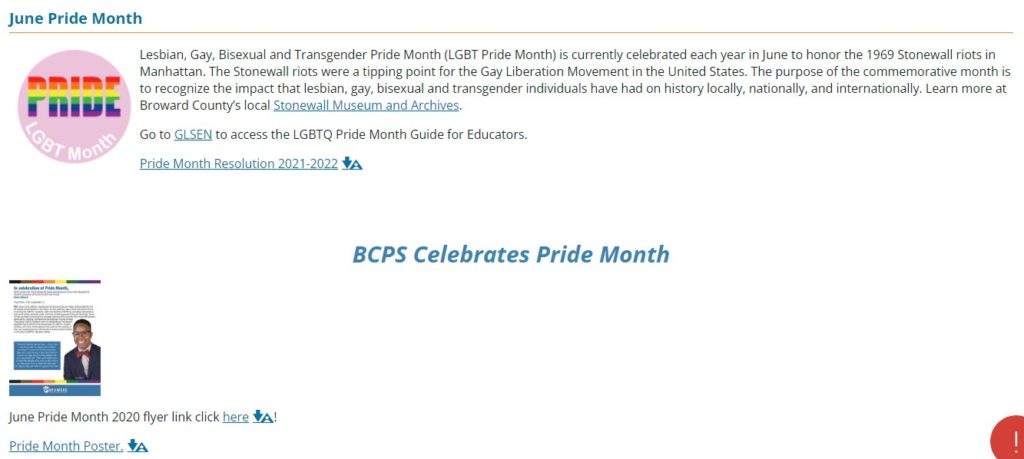
The “June Pride Month” page also promotes the “LGBTQ Pride Month Guide for Educators” from the organization GLSEN. The organization’s guide encourages teachers to “include LGBT history in your lessons” and to “read LGBT themed/inclusive books in class.” The organization states to “celebrate LGBT Pride Month by highlighting historical LGBT leaders, discussing the LGBT movement or by simply creating a display for your classroom.”
GLSEN is an organization known for promoting LGBTQ issues to young children. GLSEN states on its website that “while many LGBTQ+-inclusive school supports begin in middle or high school, it is critical for elementary schools to establish a foundation of respect and understanding for all people.” The organization has also appeared to show support for children taking “hormone replacement therapy” to transition to another gender:
Upon birth, we are typically categorized into one of two genders (boy or girl) depending on how our genitals are read. Throughout our lives, however, our many bodily characteristics work together to create a unique path of development, causing some of us to grow really tall, and others to remain short, or some of us to grow hair under our armpits and legs, while others remain bare. While this development often happens on its own during puberty, this change can also be administered through medicine, such as hormone replacement therapy. Since our society often conflates our bodies (or genitalia) with our gender identity, it is critical that we allow space for people to self-identify.
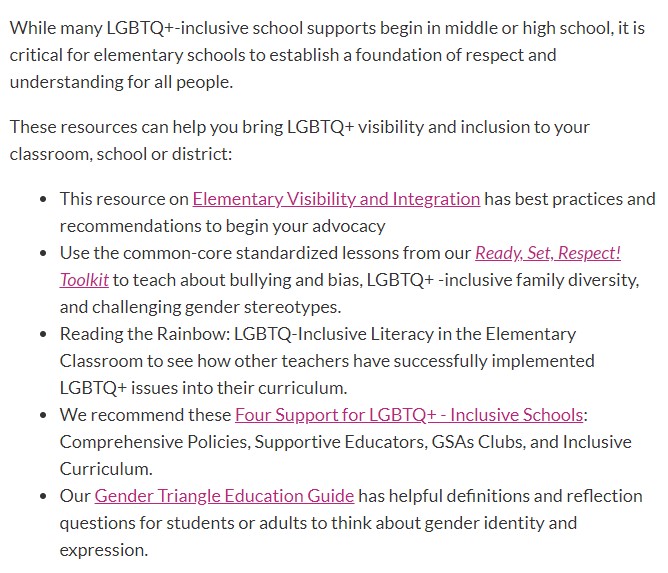

The school district has another resolution titled “Resolution in Support of National Day of Silence” for 2022. The resolution states that the School Board “supports the development and expansion of Gay-Straight Alliance Clubs in schools throughout Broward County to nurture and value all identities.” The resolution further states that “there is no single way to participate, and students are encouraged to take part in the way that is most positive and uplifting to their school.”
For “Hispanic Heritage Month” in 2016, the school district has a document online promoting “LGBTQ Connections.” The school district tells teachers in the document that they “can infuse Latino/Hispanic Heroes of the LGBTQ Community within your curriculum.” The district promotes a “timeline activity” with a link to GLSEN in an effort “to have a better understanding of the historical context of LGBTQ/Hispanic people in the United States.”
The school district appears to also support LGBTQ clubs for young children. Falcon Cove Middle School has a club called the “LGBTQIA+ Support and Awareness Club.” The school explains that the “club is a safe place to talk, play games, discuss issues, ask questions, and just be yourself.”

The school district’s website has a “Diversity” page that states “the dimensions of diversity include gender, religious beliefs, race, marital status, ethnicity, parental status, age, education, physical and mental ability, income, sexual orientation, occupation, language, geographic location, and many more components.” The page also features a “Diversity Wheel” that “shows the complexity of the diversity filters through which all of us process stimuli and information.” Dimensions on this wheel include “gender,” “race,” “religion,” “sexual orientation,” and “ethnicity.”

The school district’s website also has a page titled “Diversity Days of Observance and Resources.” Days and months of observance on this page include “Diversity Awareness Month,” “Day of Silence,” “LGBT History Month,” and “LGBT Pride Month.” The school district also has a resolution titled “Resolution in Support of Diversity Awareness Month” for October 2021. The resolution states that “diversity should be promoted so that isolation and marginalization of racial, ethnic and socioeconomic groups is avoided” and that “educational equity should be promoted to ensure equitable opportunities and resources to meet the needs of all students.”
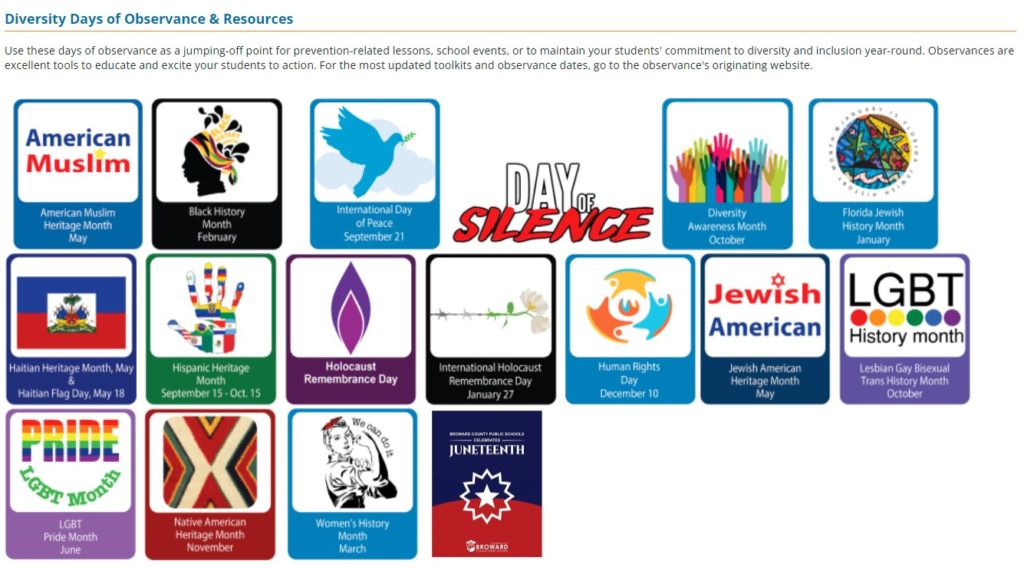
The school district’s website has a “LGBTQ” page that promotes curriculum material and training workshops to help educators teach LGBTQ issues in the classroom. The page also promotes “Gay-Straight Alliance (GSA) Clubs” for students. The school district’s page with training material for teachers includes a list of webinars titled “Ensuring LGBTQ Health and Safety,” “LGBTQ Critical Support Guide Training for Administrators, Staff and Community,” and “Gay Straight Alliance (GSA) Sponsor Training.”
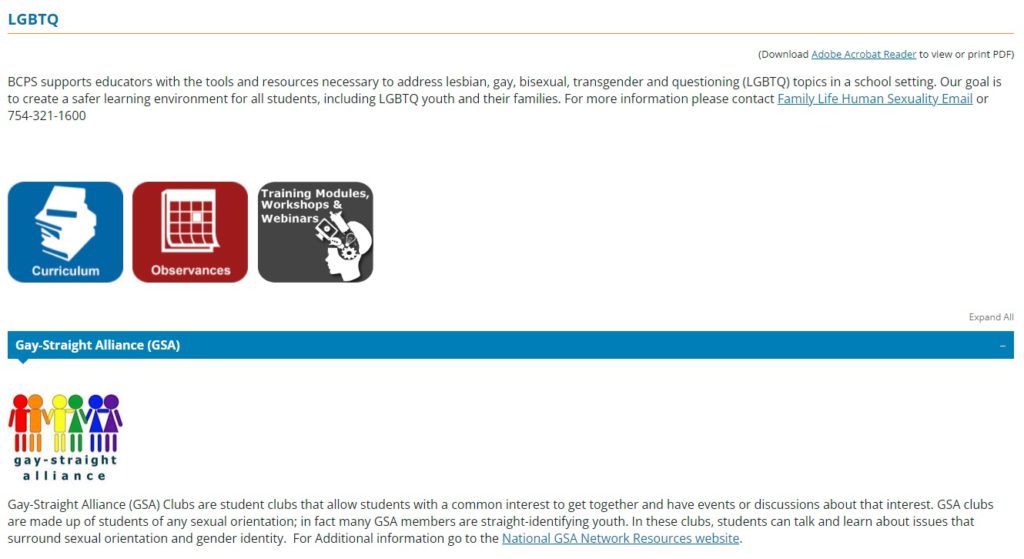

The school district has a document online titled “Understanding Equity and Diversity.” The document has a page labeled “Ground Rules/Norms.” These “ground rules” include to “speak YOUR truth” and to “experience discomfort.” The document also promotes looking at every “policy, program, practice, or decision” through “the lens of equity and diversity.” The school district states in the document that the following must be considered with every decision:
- What racial/ethnic groups are affected/impacted?
- Does the program or situation ignore or worsen existing disparities?
- How are stakeholders involved?
- What are the barriers to more equitable outcomes?
- How will negative impacts/barriers be mitigated?
The school district’s website promotes an “Equity and Diversity Department.” One equity resource on the school district’s website is another page titled “Equity Liaison Program.” The page explains that “Equity Liaisons (EL) will receive specialized training and develop equity plans based on individual school data.” The page also promotes a “2022 Equity Conference” that the school district appears to be hosting. The website for this conference states that “the Re-Imagining Equity & Diversity, Equity Conference 2022 brings general and special education teachers, school administrators, and service providers together for a day filled with informative, educational, and awareness-building sessions on a broad range of state standards and equity standards that promote educational equity for all students.”
One goal of this conference is to “provide continuous professional development opportunities on a range of topics such as cultural biases, culturally responsive teaching, building equitable frameworks to assess individual cultural competence; enhance knowledge and respect for racial and gender equity and diversity as it relates to Florida State mandates and standards.” Another goal is to “promote continuous professional growth and improvement on cultural diversity and equity in education to address instructional strategies that promote cultural inclusiveness and produce equitable outcomes in compliance with new Florida State law.”
The conference will feature “breakout sessions” that include the topics “A Climate of Inclusivity: How to Integrate STEM with Social Justice,” “Culturally Responsive Instruction: An English Language Learner’s Perspective,” “Conversations with the President of the Broward NAACP Fort Lauderdale Chapter,” and “Affirming and Liberating Black Students by Centering Their History and Culture.” The conference will take place on June 17, 2022.
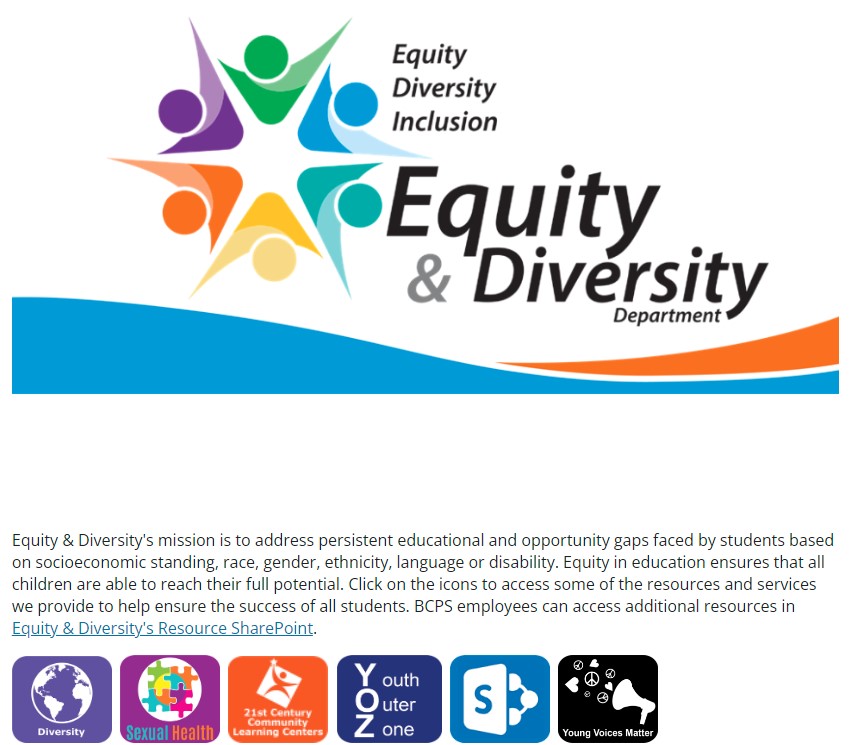
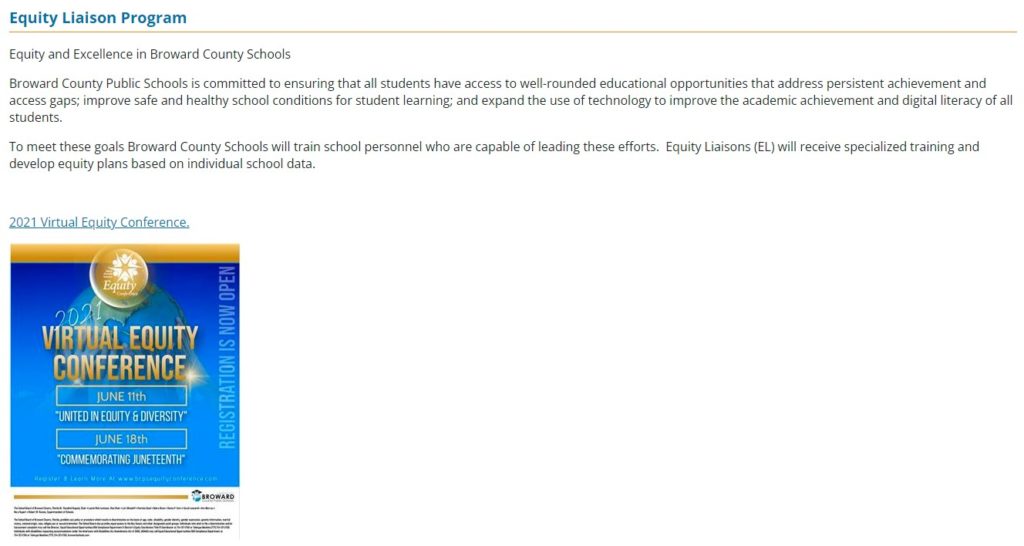

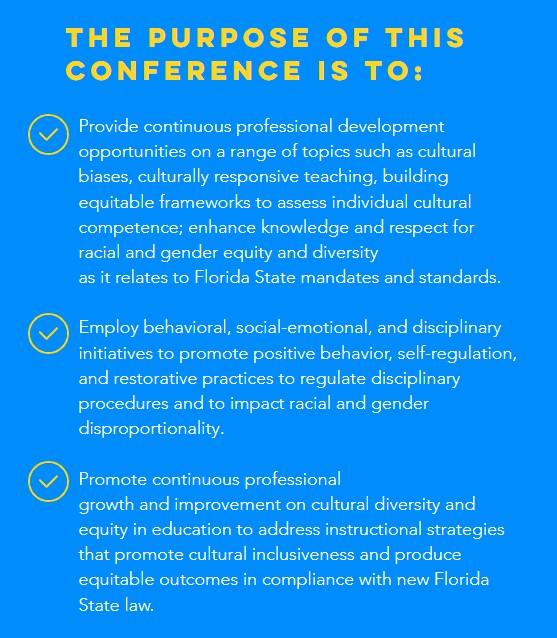
Stay Informed
